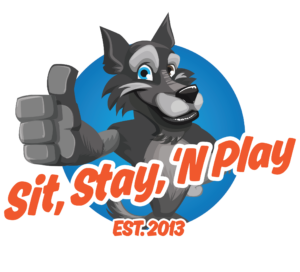If you are considering adding another dog to your family, make sure that you are ready for the responsibility that comes with training a second dog and helping your current dog adjust to the new addition. There are a few questions I want you to ask yourself, and your family members before making bringing home a new dog:
Is your current dog out of puppyhood and fully trained? The new dog will accept behaviors from your current dog as appropriate and acceptable. Can you live with two of that?
Is your dog ready for a play-mate? Not all older dogs like a puppy at their tail when they are trying to rest.
Do you have any large projects or events planned in the very near future? You will need time to properly train and socialize your new addition.
Is everyone in your household onboard with the decision? Remember, two dogs are twice as much money as one dog is, and may even require a larger vehicle. Who is the primary caregiver for the current dog? Most likely, it’ll be that same person taking care of both dogs. Is that person really onboard for that?
If you answered no to any of the above, it may be time to wait until you bring home another dog, sorry. If you answered yes to all of the above, that’s wonderful! Let’s move onto how we introduce them safely…
Read up on dog body language first so that you know what your dogs are telling you (and each other).
You will want both dogs to meet on neutral property. This means at a local park that your current dog does not frequent, and not a dog park!
You will want to have another person with you to help. Each person will walk a dog at this neutral location. Have one dog/human team walk in front of the other at a safe distance away. Switch half way through the walk. If no dog is pulling, and is relaxed you can then have them walk parallel to each other a safe distance away, not allowing them to interact.
After your walk, if the dogs seem interested and fairly calm, let them walk up to each other. If the walk-up goes well, let them sniff each other. Remember to verbally praise all of this good interaction and to keep your leashes loose. After a few seconds, distract them with treats and run backwards. This reinforces the idea that you’re more interesting than another dog. During this process, watch for stiffness, lip lifting, and staring—all behaviors that can precede growling and snapping. If you see the warning signs, give the dogs a break before trying again.
If they start to play, or your dog walks back towards you without caring about the other dog, you have the “green light” from your family dog.
“Have a S.U.P.E.R. Start
Until the dogs are acclimated to each other, which could take days, weeks, or months, depending on the dog, I recommend using the “SUPER” method.
Supervise I cannot stress this enough: You must keep your eyes on both dogs, at all times, until the adjustment period is over.
Understand The puppy was your idea, not your dog’s. Akin to a sibling not being thrilled with the new baby in the house, so it sometimes goes with dogs. In time, with help from the humans in the house, your dog will adjust. Until then, remember to shower the older dog with attention and love.
Pens Crates and baby gates will be a sanity saver for you and the dogs. When I introduce a new puppy to my household, there are crate times for the puppy as well as the adult dog. Everyone, including dogs, needs “me” time. Also, I like to make sure that each dog gets time alone with me to create a bond.
Expect Your older dog may correct your puppy with a growl or snap from time to time. This is normal, and it’s how adult dogs teach puppies proper social skills. Your job is to supervise so that things don’t get out of hand and that there’s no gratuitous or over-the-top aggressive reactions to the puppy.
Reinforce Reward your dog when he shows tolerance for the puppy. If my dog doesn’t move away, growl, or snap when the puppy lies down next to him, I say “Yes” and reward with a treat. Between that and limiting your dog’s exposure to the puppy, you can eventually expect a peaceful coexistence. If the relationship is consistently rocky, pursue professional dog-training advice immediately.
Like any training process, introducing, training, and socializing a new dog takes time. Remember to be patient and use rewards and praise to reinforce your dog’s progress.” ~AKC
If you would like helping to select your next dog, feel free to reach out to us. We want to help you, and your growing family, have the best dogs your can have.
For more information on how to train your dog, contact us at Sit, Stay, ’N Play. We are located at 1501 North 5th Street in Stroudsburg. 570.872.9748 or online at www.sitstaynplay.net Did we mention that a trained dog is a happy dog?

